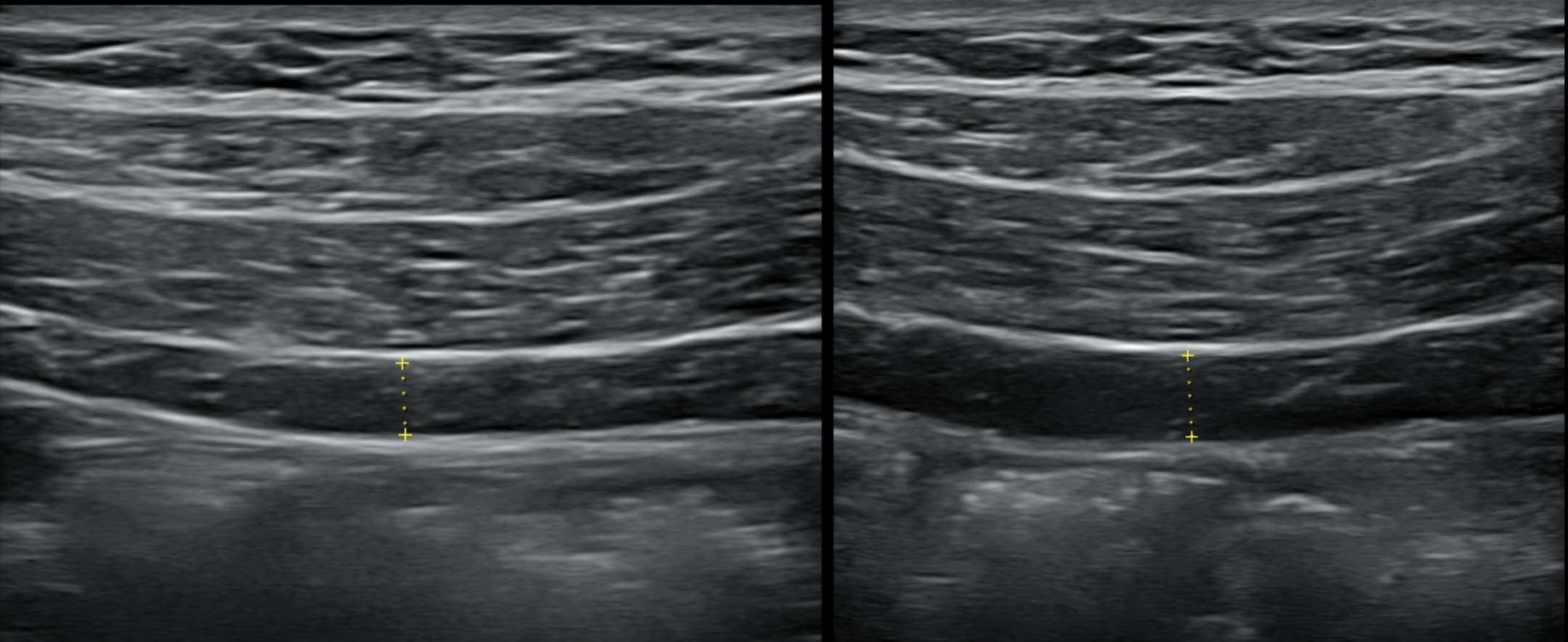The latest issue of the Journal Fisioterapia has just published a scientific article about the muscular response of the pelvic floor and abdomen during hypopressive exercise. The assessment was done with transabdominal ultrasound on women who were previously trained in this technique. The study was carried out by the women’s health research group of the University of Alcalá de Henares (Spain).
The results of this study show that the women were able to elevate their pelvic floor during the hypopressive exercise (transverse plane: 6.8 mm; sagittal plane: 4.6 mm). In addition, deep abdominal muscles also contracted during the hypopressive exercise. Of note, both results were obtained without a voluntary contraction. In other words, the musculature was able to contract and lift without asking the subjects to voluntarily tighten the belly or pelvic floor during the exercise. This muscular response is a result of the specific (and unique) postural and breathing action involved in the hypopressive technique. More specifically, there was an observable increase in thickness of the transverse (1.8 mm), the external oblique (1.5 mm) and the internal oblique abdominal muscles (0.5). These results are similar to those previously found with ultrasound by our Low Pressure Fitness research team:
Regarding the findings about pelvic floor elevation, observe the bladder lift during a proper hypopressive technique through ultrasound imaging in the following video:
Two points should be highlighted from this study. First, this study was carried out with women who had previously attended supervised physiotherapy for two months. Proper technique was taught to all participants. Indeed, learning the hypopressive technique requires both time and regular supervision from certified professionals. The results obtained from an observational study can differ drastically depending if the sample is trained or not, leading to bias or misinterpretation. Due to the ongoing learning process, a minumum adaptative period is required (between one to two months) until the hypopressive exercise is fully integrated.
Second, it should be noted that this study places a strong emphasis on proper lumbopelvic posture when performing the breath-holding maneuver. Neutral pelvis is a basic postural principle of Low Pressure Fitness. One of the most common errors when performing the hypopressive technique is to tilt the pelvis which can leads to an undesirable hypo- or hyperlordotic posture. This error could interfere with the response of the core muscles which can effect the results of the exercise protocol. This is the case of a previous study (Stupp et al. 2011) that did not include postural patterns or proper instruction in order to learn the hypopressive technique. Consequently, their findings should be interpreted with caution. Moreover, the description of the technique in the study by Stupp et al., (2011) differs substantially from the description in practical manuals.
Be sure that a certified LPF professional instructs and supervises proper pelvic and spinal postures during your hypopressive training. To learn how to teach hypopressives, visit: www.lowpressurefitness.com
Therefore, sufficient knowledge and adequate training should be a priority for coaches and trainers. The experience and dedication of our teaching staff is our highest guarantee for excellency in training. If you would like to learn the full effectiveness of hypopressives, Low Pressure Fitness, check out our online directory of certified professionals . In order to get your certification, do inquire about our training courses and receive full information today.
